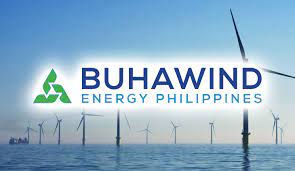Philippines-based Buhawind Energy Philippines (BEP) will be making investments worth P740 B for three offshore wind projects in the Philippines.
BEP is a joint venture between Danish firm Copenhagen Energy (CE) and Yuchengco-led PetroGreen Energy Corporation(PGEC), which was formed in 2022. Once completed, it is expected to add 4,000 megawatts of renewable energy (RE) capacity to the Philippines power supply upon completion.
Commenting on this, Copenhagen Energy Chief Executive Officer Jasmin Bejdic said that the first offshore wind project in Ilocos Norte with the capacity of 1,650 to 2,000 megawatts will be completed in 2027, while the next phases of 1,000 megawatts in Northern Mindoro and 1,000 MW in East Panay will start operating in 2030. According to him, the capital expenditure required for the offshore wind facilities per megawatt-installation shall be at €2.0 million to €3.0 million.
“That would be 8 to 12 billion euros for the entire 4.0-gigawatt projects, it will be a big infrastructure investment, and this will be among the biggest investments in the Philippines,” said Bejdic.
Bejdic stressed on the need for the key policies and infrastructure support facilities by the government as well as the other relevant stakeholders in the sector, for the completion of offshore wind projects.
“There are four critical enablers as we call them in order to reach maturity of the projects where we would start the construction – one should be grid connection so we can get the power into the system; then there’s the offtake; and the infrastructure in terms of port infrastructure which is very important; and the last one is the permitting process that has to be streamlined,” he pointed out.
“On the sphere of grid integration, the CE chief executive raised concern that “there is a backlog for many offshore wind projects that are waiting for the outcome of the system impact study. What we have been appealing to is: for this backlog to be cleared and the priority projects are prioritized because we can help to deliver the power required by the country,” said he.
Bejdic noted that an auction system, similar to the green energy auction (GEA) for the other RE technologies, would also help the nascent offshore wind sector. He indicated that the recent issuance of Executive Order No. 21 by President Ferdinand Marcos Jr. on the streamlining of OSW (off-shore wind) permitting is encouraging for the investors.
“We have had dialogues with authorities about introducing a one-stop shop, basically, if we would have to deal with one authority, the DOE – that authority will then both deal with local levels; regional levels; with environmental agencies – so it’s really about streamlining the process because once you get a service contract, you still have to get all permits in parallel. And I think that has been a positive development with the Executive Order, so that’s really good – so from that, it’s about implementing the system to speed up the processes,” he said.
At present, Bejdic conveyed that “along with our partner PetroGreen, through Buhawind, we are in the process understanding the port infrastructure; and we are working on understanding the soil conditions, that’s very important for the design of the platforms.”
Additionally, he emphasized that the JV company is in the process of comprehensively measuring the potential of the wind resource across its project sites, “and we are also looking into the offtake possibilities, basically, how can we have secure offtake for a long term that can make the project financially viable.” He further informed that the Northern Luzon project will be a ‘flagship project’ of the CE-PetroGreen joint venture and under the suitable circumstances, the company can start injecting its generated electricity into the grid by 2027.
“We have actually made the feasibility studies already, so basically, the Northern Luzon project in Ilocos Norte is our flagship project.We have done also local consultations and we are looking into environmental impacts,” he shared, adding that “during the feasibility study, we have studied the whole of Philippines; when we look into wind resource constraints, we assessed where are the environmental sensitive areas, so we tried to stay away from those and we tried to identify these areas that are some of the best locations in the Philippines,” he noted.

